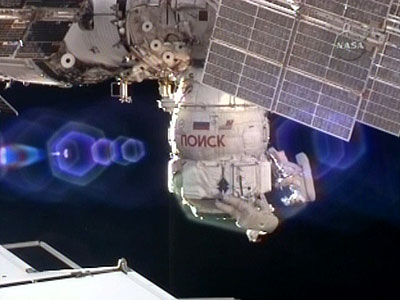If a picture is worth a thousand words, then the Expedition 22 crew aboard the International Space Station is about to complete the generation of 100 million words worth of information.
That’s because Commander Jeff Williams and Flight Engineers Max Suraev, Oleg Kotov, T.J. Creamer, and Soichi Noguchi are expected to snap a total of 100,000 images by the end of their mission in Earth orbit.
Williams is setting a record that surpasses his own previous record of 83,856 images taken during Expedition 13 in 2006.
“This week we broke my old Exp. 13 record for number of Earth photos,” Williams “tweeted” from the station. “Later, after landing and recovery, I will post some of best.”
Among those digital still images is this spectacular nighttime image taken of Houston, Texas, the home of Mission Control and astronaut training, and the hub of the International Space Station Program that unites five space agencies and 15 countries in peaceful exploration and scientific research.
Williams and Suraev will end their five-and-a-half-month stay on the station Thursday, when they undock their Soyuz spacecraft and head for a landing in Kazakhstan. They were part of both the Expedition 21 and 22 crews. Kotov, Creamer and Noguchi will stay on orbit, snapping more photos, for two more months before returning home after being part of both the Expedition 22 and 23 crews.
All told, space station crews so far have amassed a total of almost 639,000 images. Those images include photos that document life and work aboard the space station, and photos that document the condition of the home planet from its unique perspective 220 miles above Earth. Their efforts are part of a larger collection that began with Earth observations photos during the Gemini Program of the 1960s. Many of the images are used in scientific research about the Earth, its climate, its resources and the effects humans are having on both.
The recent STS-130 space shuttle mission delivered a new observation deck known as the cupola that offers the largest window ever flown on a spacecraft, and the upcoming STS-131 shuttle mission to the station will deliver the Window Observational Research Facility (WORF), which will provide a new facility dedicated to multi- and hyper-spectral remote sensing and high resolution Earth observation photography to enhance the use of the best optical-quality window ever flown in space, in the U.S. Destiny Laboratory.
For more information about Earth observations photography, visit the Gateway to Astronaut Photography of the Earth.












